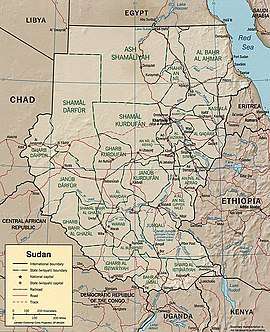Operation Lifeline Sudan

Operation Lifeline Sudan (OLS) was a consortium of UN agencies (mainly UNICEF and the World Food Programme)[1] and approximately 35 Non-governmental organizations operating in southern Sudan () to provide humanitarian assistance throughout war-torn and drought-afflicted regions in the South. Operation Lifeline Sudan was established in April 1989 in response to a devastating war-induced famine and other humanitarian consequences of the Second Sudanese Civil War between the Sudanese government and South Sudanese rebels. It was the result of negotiations between the UN, the Government of Sudan and the Sudan People's Liberation Movement/Army (SPLM/A) to deliver humanitarian assistance to all civilians in need, regardless of their location or political affiliation.[1] This included over 100,000 returnees from Itang in Ethiopia in 1991.[2]
Lokichogio was the primary forward operations hub for OLS.
Notes
- 1 2 Operation Lifeline Sudan at the United Nations Website retrieved February 28, 2008
- ↑ Clapham (ed.) p. 63.
References
- Clapham, Christopher (ed.) African Guerrillas (Oxford, 1998) ISBN 0-85255-815-5
- Operation Lifeline Sudan at the United Nations Website
- at Conciliation Resources, 2005. Retrieved 2017-02-11.
- Taylor-Robinson, S. "Operation Lifeline Sudan"," J Med Ethics. 2002 Feb; 28(1): 49–51.